Surprisingly, some Chinese manufacturers are still holding press conferences as the Chinese New Year approaches. This particular event of BYD features two significant models: the Han L and Tang L.
In fact, these new cars had already appeared in announcements by China’s Ministry of Industry and Information Technology before this event.
Let’s start with the Han L. As the name suggests, this new model is larger than the original Han, with a length of 5050mm, a width of 1960mm, and a wheelbase of 2970mm, making it a typical “532” C-class sedan.
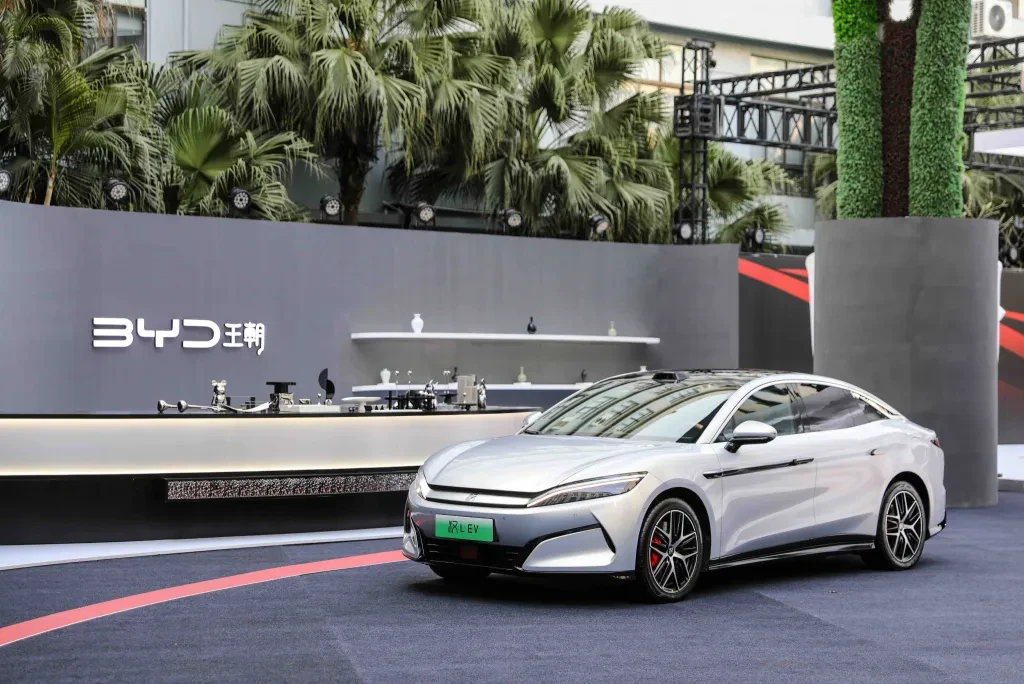
The Tang L is similar, with a length of 5040mm, a width of 1996mm, and a wheelbase of 2990mm, classifying it as a “532” mid-to-large SUV.
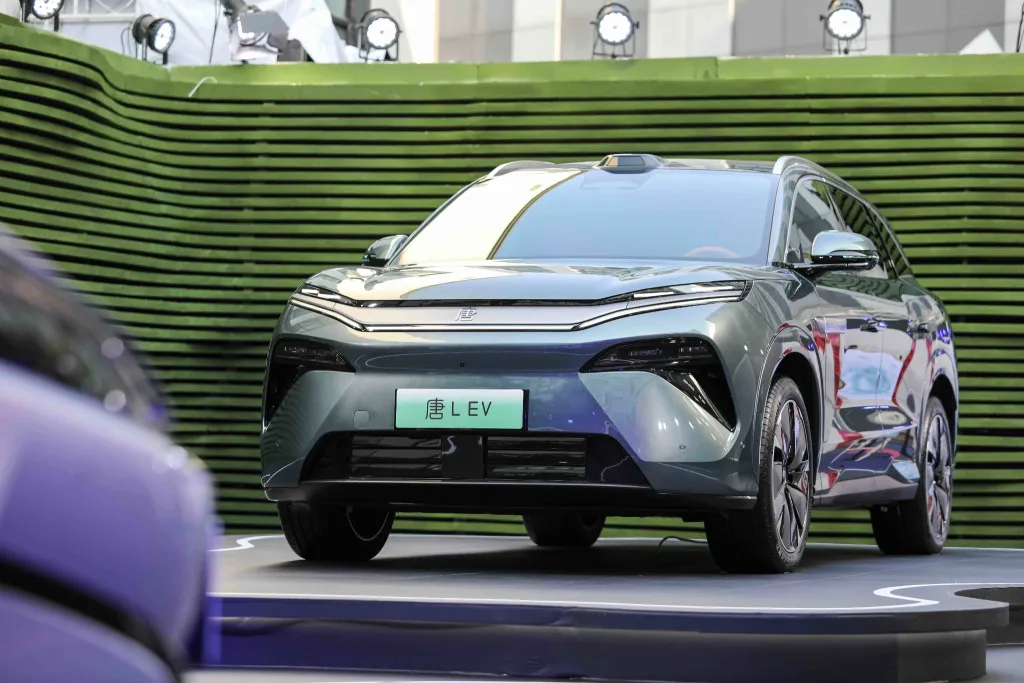
As upgraded models in BYD’s mid-to-high-end range, the Han L and Tang L have seen significant improvements in their power systems, especially the all-electric versions. The single-motor rear-wheel-drive model boasts a peak power of 500kW (670 horsepower), while the dual-motor model reaches a combined power of 810kW (1086 horsepower), with the rear motor alone peaking at 580kW (777 horsepower).
Over 1,000 horsepower for the Han and Tang…
It’s intriguing to see what BYD has pulled from their “technology pool” this time.
BYD Gives Han and Tang a New Look
“It’s distinctive, very attractive, almost unique. I understand why such a car can succeed in the market.”
This is how renowned car designer Frank Stephenson, who has worked with brands like BMW, Ferrari, Alfa Romeo, and McLaren, described the design of the BYD Han.
From the “mature” look of the BYD F3 to the now well-known Loong Face, BYD has successfully moved away from the “imitation equals success” mindset, embracing original designs rich in Chinese elements.
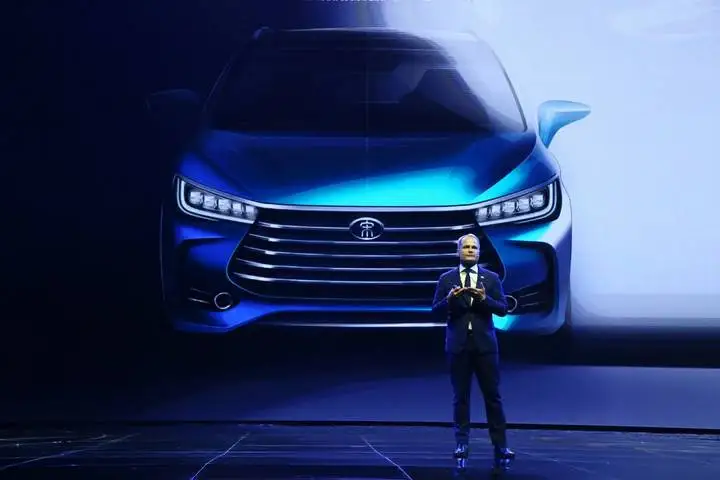
This transformation at BYD is largely credited to the former Audi design director Wolfgang Egger. At the end of 2016, after completing works like the Audi R8 and Audi A7 Sportback, Egger left Audi to join BYD as design director. The following year, he introduced the first model featuring the Loong Face design—the Song Max.
Now, nearly a decade later, Loong Face is undergoing a transformation in both design and concept.
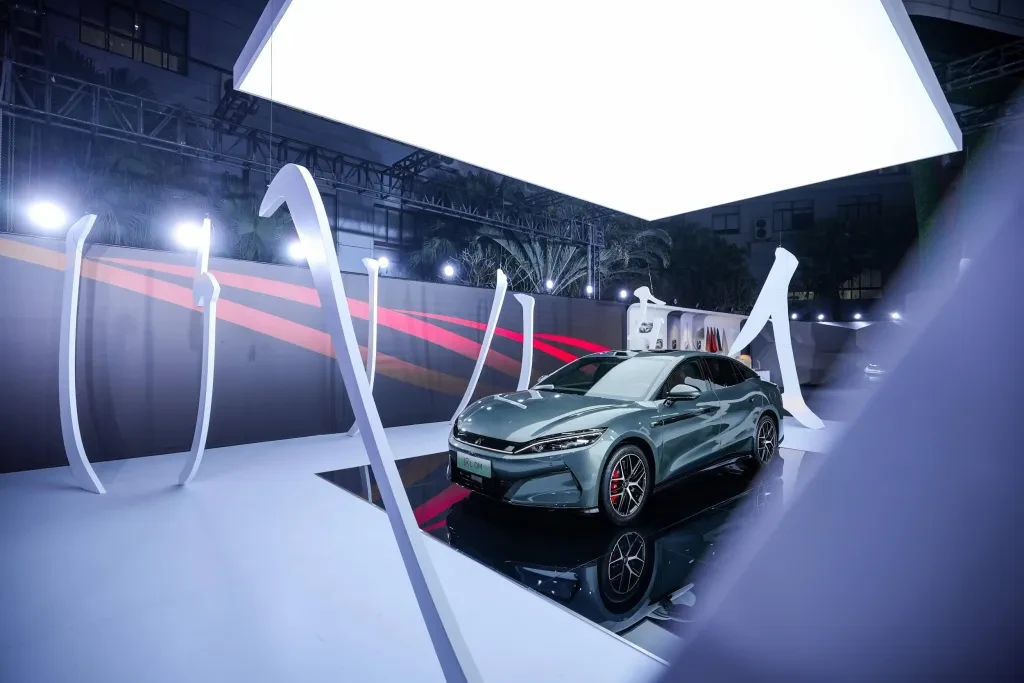
Egger has always believed that car design should be a cultural vehicle. At the event, he stated, “Regarding the Loong, I see it not only as a spiritual totem in the bloodline of the Chinese people but also as a symbol that has accompanied the development and changes of this ancient civilization for thousands of years.”
In traditional Chinese culture, the Loong is a mythical creature capable of controlling the weather, symbolizing prosperity and abundance. It also represents good fortune and embodies people’s aspirations for a better life.
However, as is well known, Western dragons differ from Chinese Loongs. Since the Middle Ages, Western culture has often depicted dragons as winged, horned, fire-breathing creatures with spiked limbs and tough scales. They are seen as greedy, malevolent, mysterious, and symbols of evil and destruction.
As BYD continues to expand internationally, the name “Dragon Face” has become somewhat misleading. Therefore, with this iteration, BYD has changed “Dragon Face” to “Loong Face.”
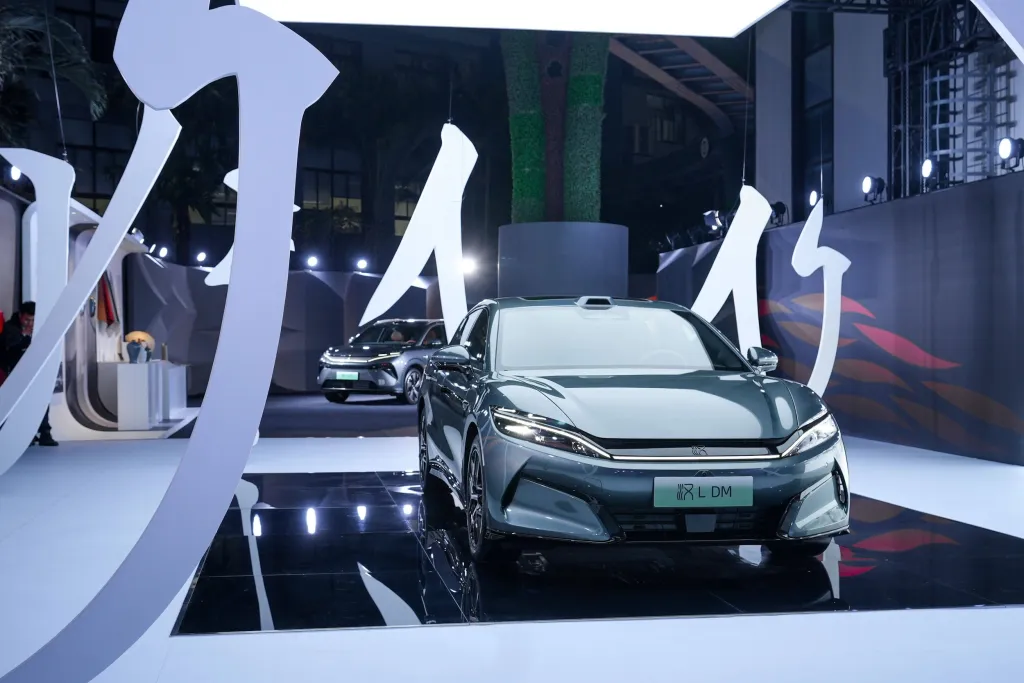
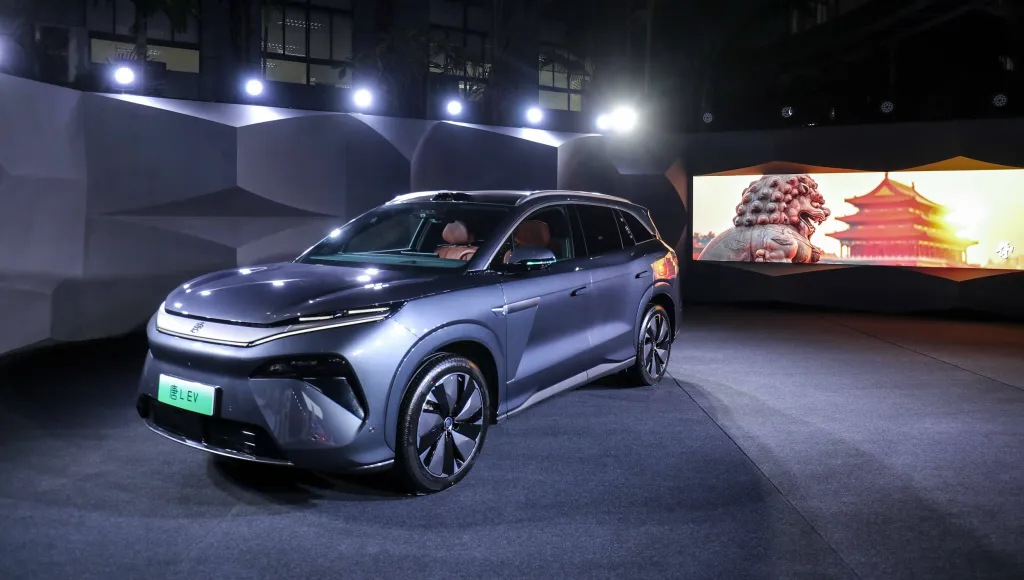
At the launch event, Mr. Ai explained the new Loong Face aesthetic, as expressed in the new Han L and Tang L models.
First, BYD adjusted the proportions of the Loong whiskers, making them more three-dimensional and dynamic. The elongated whiskers visually extend to the sides, giving the front a more imposing presence.
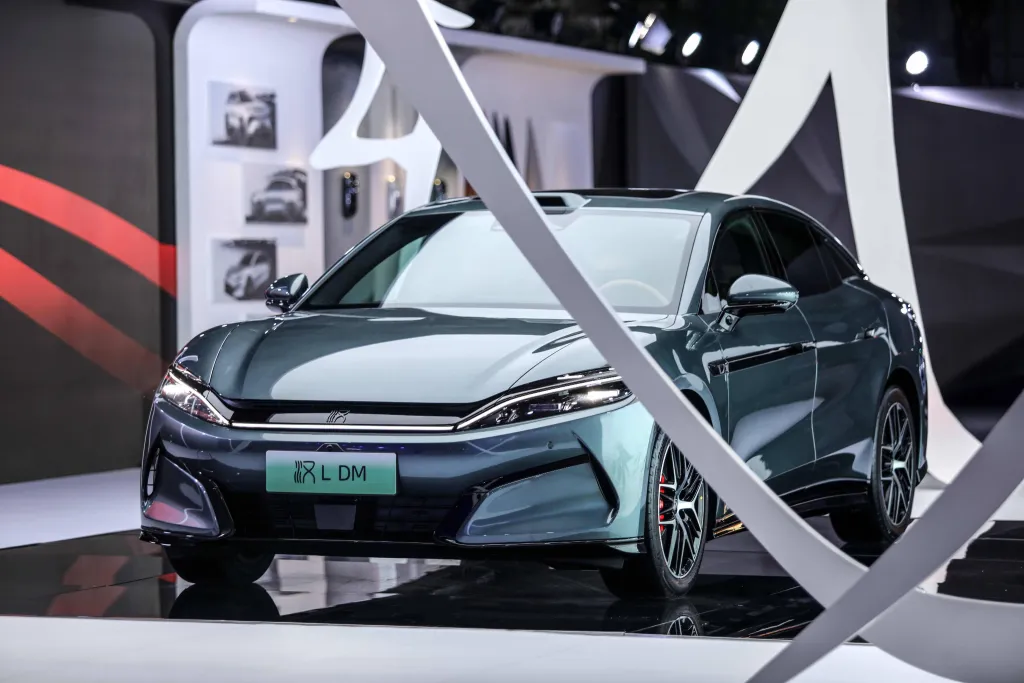
On the side, the Han L and Tang L feature calligraphy-inspired strokes on the fenders. The Han L cleverly uses these strokes to outline the D-pillar, a design uniquely named 「撇捺有锋」”Pian Na You Feng.”
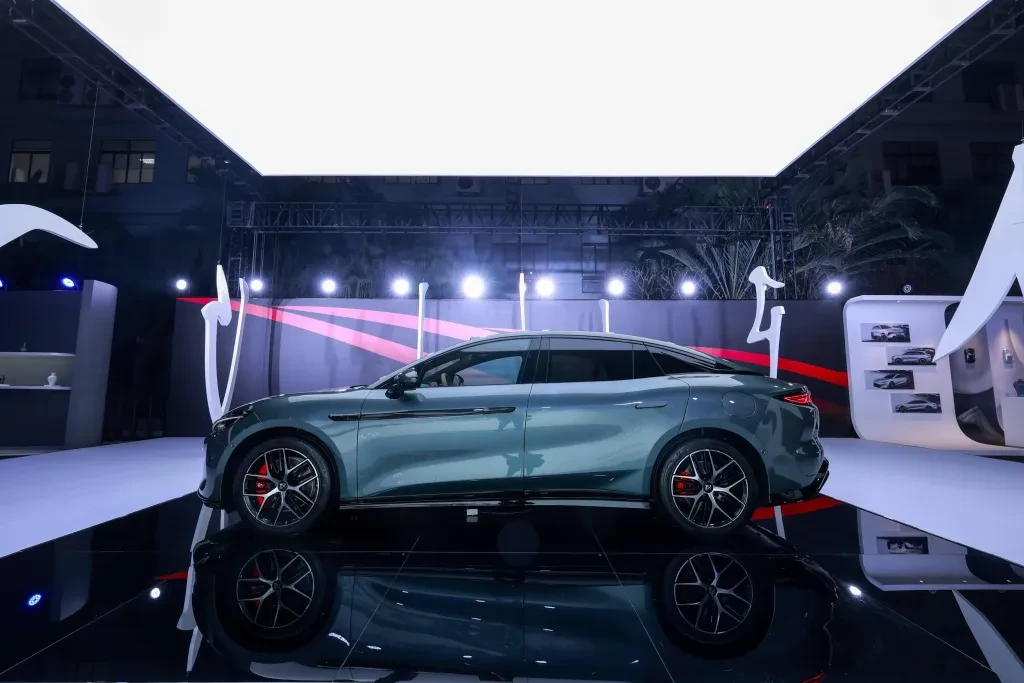
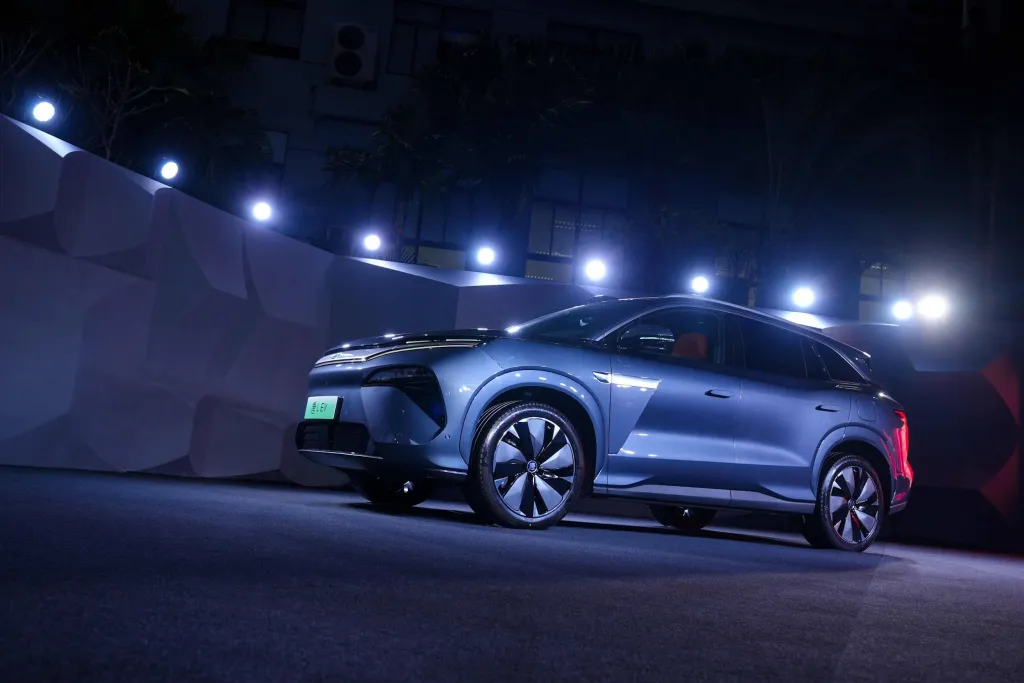
At the rear, BYD extended the design of the Chinese knot taillights first seen on the Han model, creating a new taillight for the Han L called 「凤之翎」”Feng Zhi Ling.” The Loong and phoenix motifs are perfectly matched.

The Tang L, however, features taillights inspired by traditional bamboo weaving, named 「竹之韵」”Zhu Zhi Yun.” The curved, three-dimensional lights complement the car’s body lines beautifully.
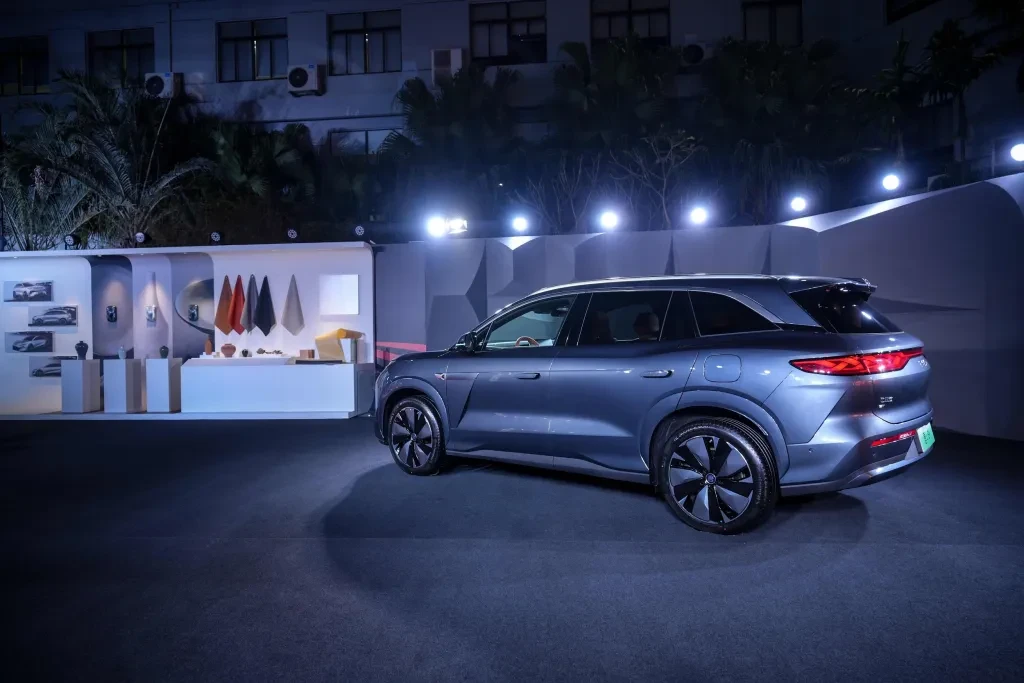
It’s clear that BYD’s design for the Han L and Tang L exteriors draws inspiration from traditional Chinese culture. Naturally, BYD also has a unique approach to the interiors of these vehicles.
Interior Completely Revamped
Seeing the interiors of the Han L and Tang L, I must say BYD has finally removed those oddly shaped, blue-glowing gear knobs and buttons from the dashboard.
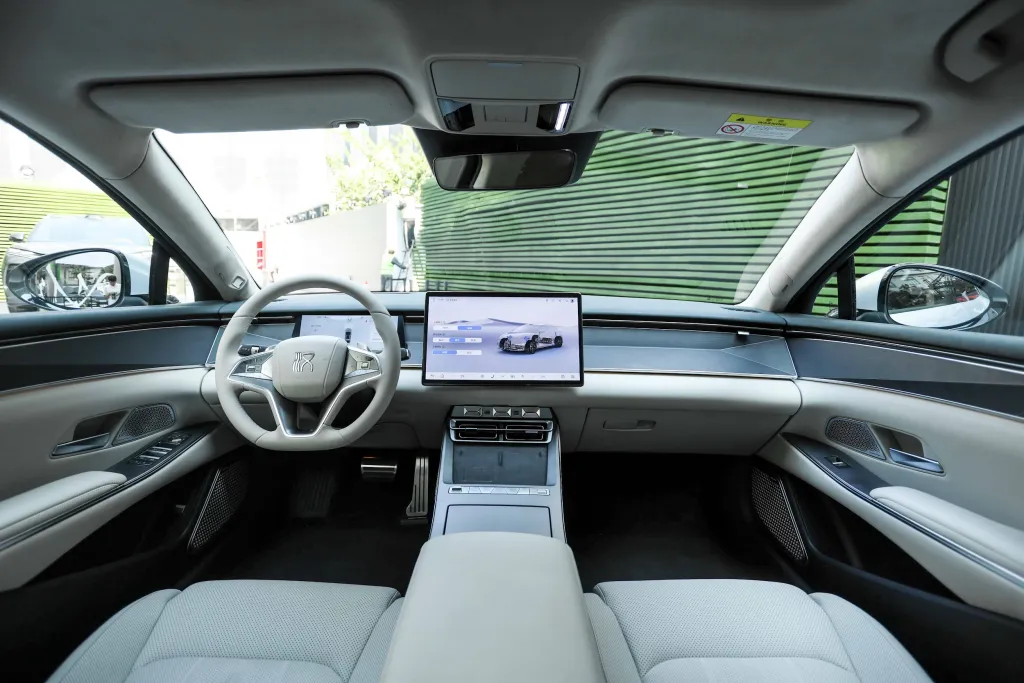
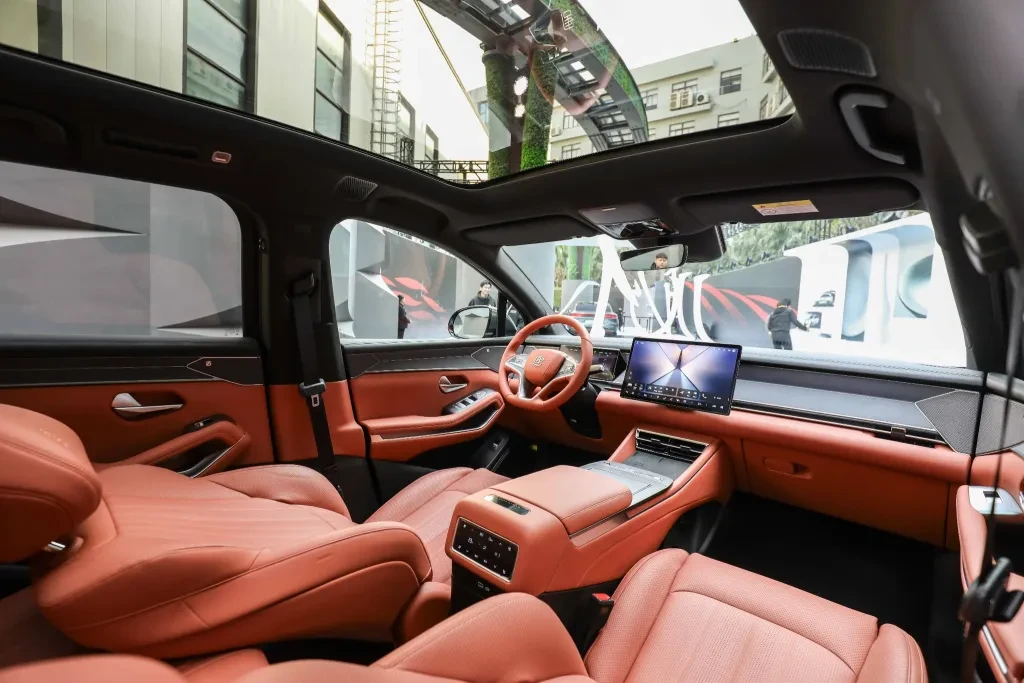
Although the layout remains conventional, and it’s hard to feel the “grand hall under the eaves” as BYD described at the launch, these new models show significant improvement over the previous Han and Tang interiors.
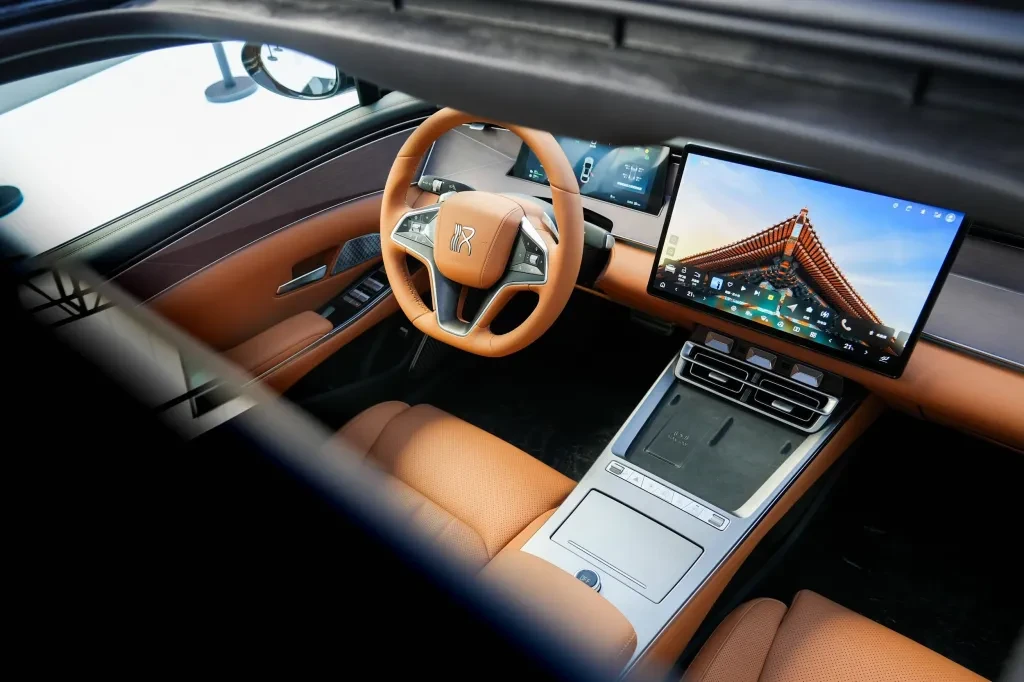
In terms of materials, BYD has been meticulous. The new cars use 3D bamboo wood as a new interior material, adding elegance to the cabin. The dashboard features a leather and knit fabric combination for a softer touch, and the inside of the armrest box is lined with flocking for enhanced tactile comfort.
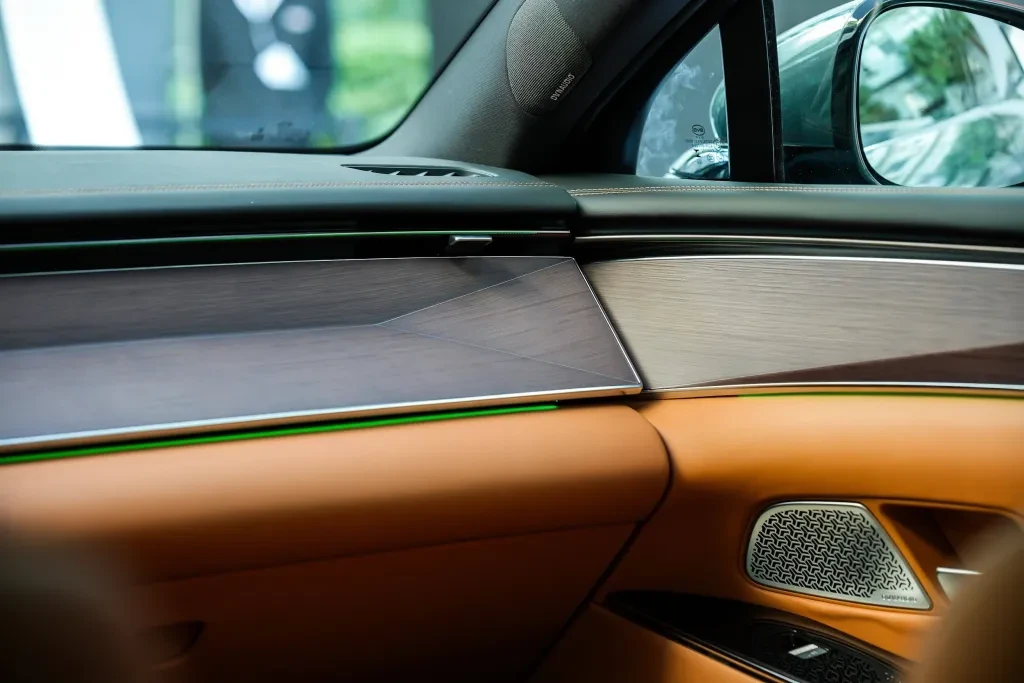
Thanks to the increased body size, the cabin space of the Han L and Tang L has also improved. The rear shoulder space of the Han L reaches 1484mm, comfortably seating three people, while the Tang L offers 1512mm.
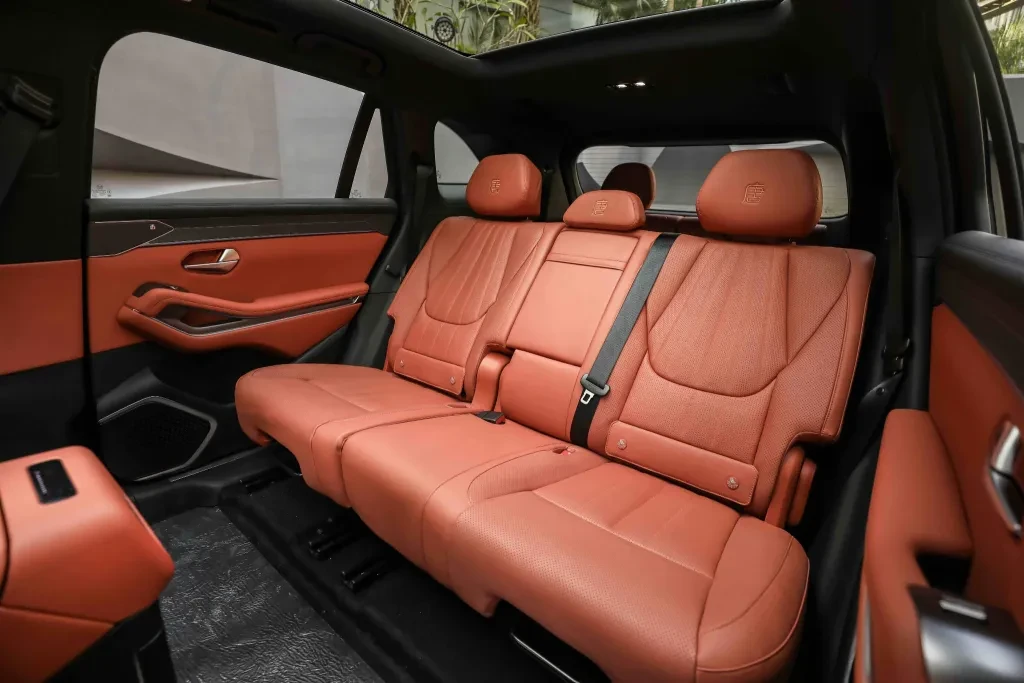
Lu Tian, General Manager of the Dynasty Network, emphasized the Tang L’s new standard “2-3-2” seating layout, which is designed to be highly adaptable.
In the five-seat configuration, the third-row seats can be completely folded down, expanding the trunk capacity to 960 liters. When camping outdoors, both the second and third rows can be folded, turning the entire car into a “large bedroom.” When seating six people, the third row can be folded individually, providing a trunk capacity of 675 liters.
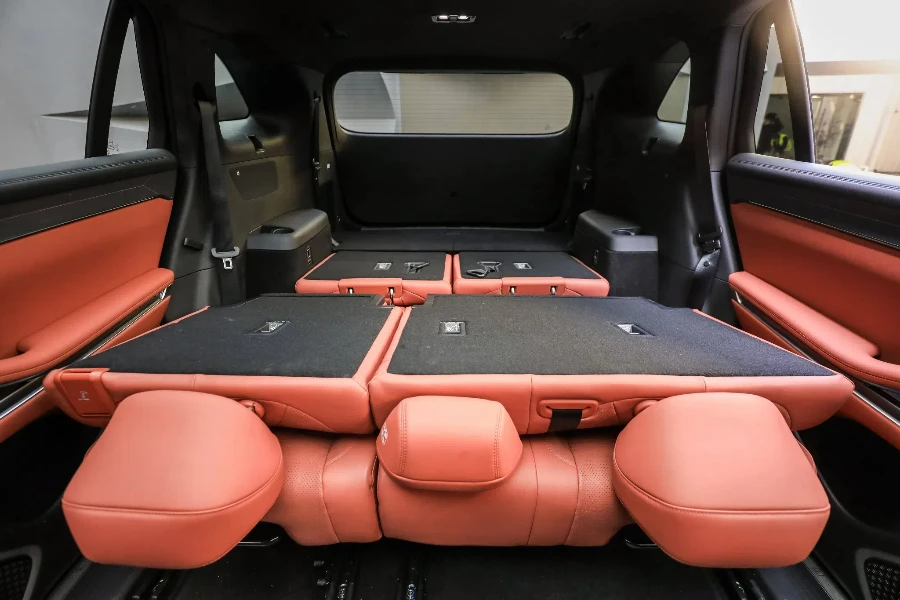
However, it’s clear that compared to other six-seat models on the market, the third-row seats in this layout won’t offer a great seating experience, and the trunk space is quite limited when fully loaded. The advantage lies in its flexible space, allowing for an extra passenger when needed.

I remember some readers complaining in the comments section a while ago about the decreasing number of seven-seat cars. Well, here it is.
At the end of the launch event, General Manager Lu Tian explained the new tail badge of the Han L and Tang L to us. He said:
“What does L stand for? L represents Large, Long, Luxury, Limit, Level, and Leading, meaning bigger, longer, more luxurious, surpassing limits, breaking through levels, and striving to lead.”
Lu Tian gave an example—0 to 60 mph (100 km/h) acceleration. He stated that with each update, the Han and Tang models improve their 0 to 60 mph times by a notch, from 4.9 seconds to 3.9 seconds. Now, the Han L has further improved this to 2.7 seconds. This is achieved with over a thousand horsepower.
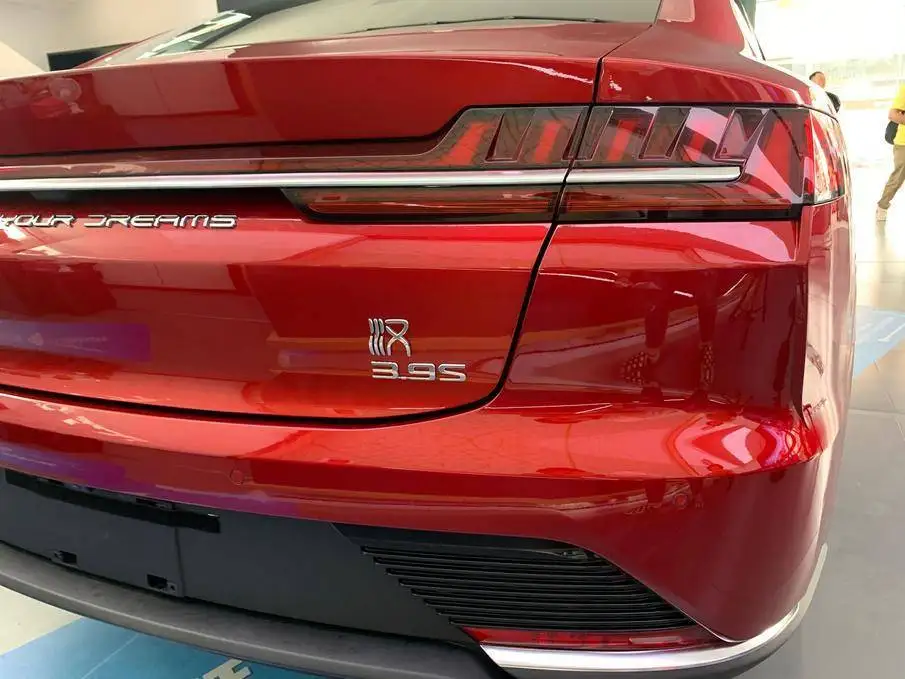
However, regarding the power systems of the two cars, BYD did not reveal much at this launch event. The specific technical details will be known after the official release in March.
Continuing to Aim High
In 2024, BYD concluded the year with a record of 4.27 million vehicles sold, exceeding its annual sales target and achieving a 41.26% year-over-year growth, marking a significant milestone in the history of China’s automotive industry. It’s worth noting that the entire Chinese car market in 2024 was 31 million vehicles, with BYD alone accounting for 14.7%.
In the price range below approximately $27,350, many products from BYD’s Dynasty and Ocean networks achieved a total sales volume of 4.03 million vehicles, thanks to their value for money. Models like the Seagull, Qin L, Seal 06, and Qin PLUS are heavyweights, each selling 30,000 to 50,000 units per month.
However, in the fiercely competitive mid-to-high-end market above approximately $27,350, BYD has not yet established absolute dominance. BYD Group Executive Vice President He Zhiqi also mentioned at the launch event: “Compared to models priced below approximately $27,350, the sales of models above this price are still relatively modest.”
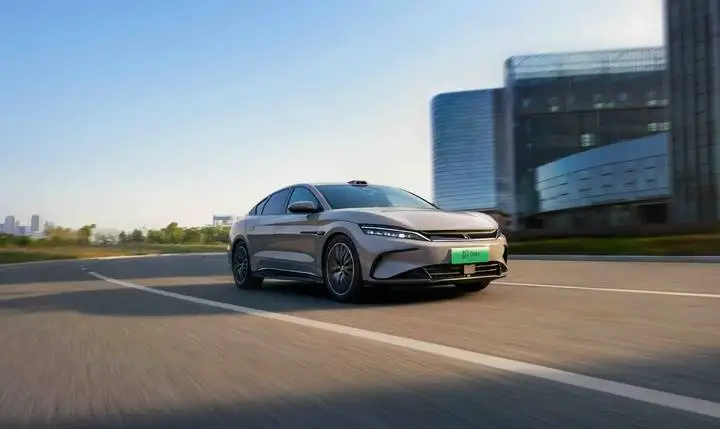
From the data, the combined sales of the Han and Tang models in 2024 were 412,000 vehicles, meaning that BYD’s mid-to-high-end models only accounted for 10% of the brand’s total sales.
The current BYD Han, despite undergoing multiple updates with continuous evolution in its electric, hybrid systems, car software, and suspension, is a flagship sedan that has been on the market for five years and indeed needs a platform upgrade. Even the global best-seller Model Y has recently been refreshed.
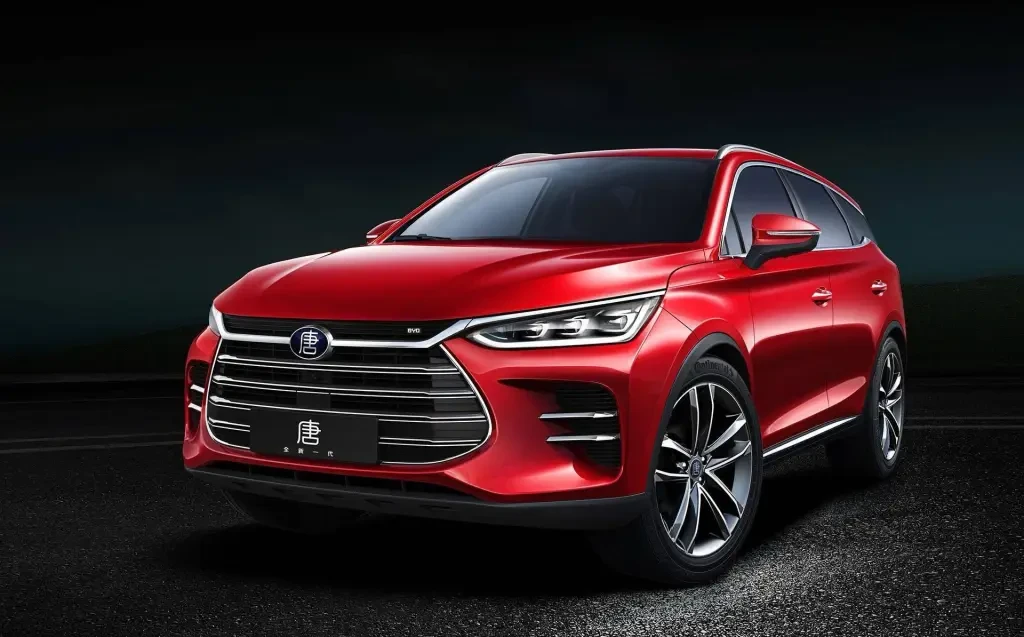
The Tang is similar. The initial 2016 and 2017 models used a body structure derived from the Lexus RX350. Since 2018, the BYD Tang has been using the new BNA architecture, which has been in use for seven years.
Currently, the product strength of the Han and Tang can no longer support the high prices they commanded when first launched. Prices have been reduced repeatedly, with the starting price of the Han even dropping to around $22,680. It’s not just about competing with the Model 3 and P7; even the pricing can’t match. The launch of the Han L and Tang L might help BYD regain its voice in the mid-range market, maintaining a competitive edge in the mainstream market while capturing a share of the mid-to-high-end market.
Source from ifanr
Disclaimer: The information set forth above is provided by ifanr.com, independently of Chovm.com. Chovm.com makes no representation and warranties as to the quality and reliability of the seller and products. Chovm.com expressly disclaims any liability for breaches pertaining to the copyright of content.
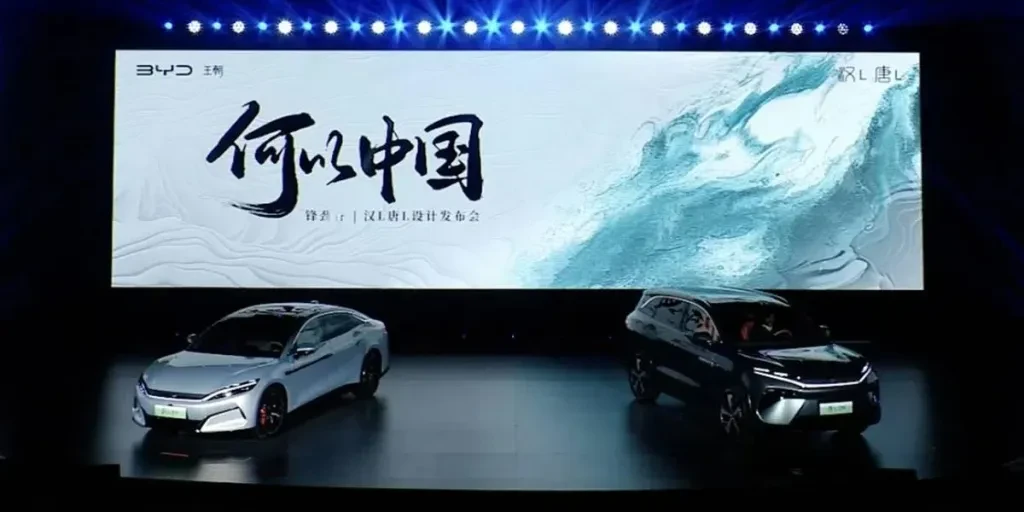




 বাংলা
বাংলা Nederlands
Nederlands English
English Français
Français Deutsch
Deutsch हिन्दी
हिन्दी Bahasa Indonesia
Bahasa Indonesia Italiano
Italiano 日本語
日本語 한국어
한국어 Bahasa Melayu
Bahasa Melayu മലയാളം
മലയാളം پښتو
پښتو فارسی
فارسی Polski
Polski Português
Português Русский
Русский Español
Español Kiswahili
Kiswahili ไทย
ไทย Türkçe
Türkçe اردو
اردو Tiếng Việt
Tiếng Việt isiXhosa
isiXhosa Zulu
Zulu